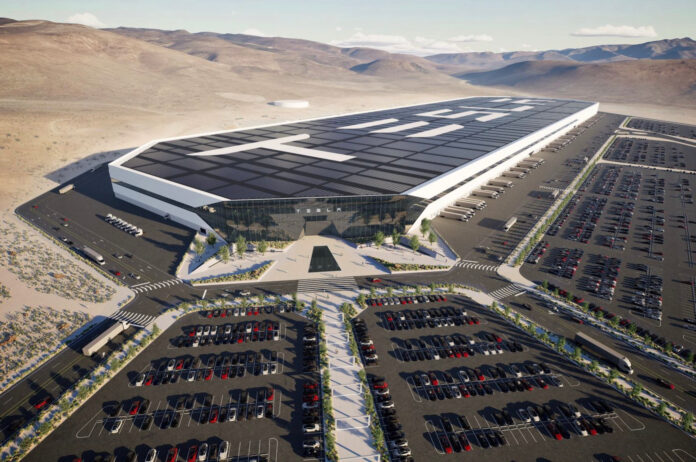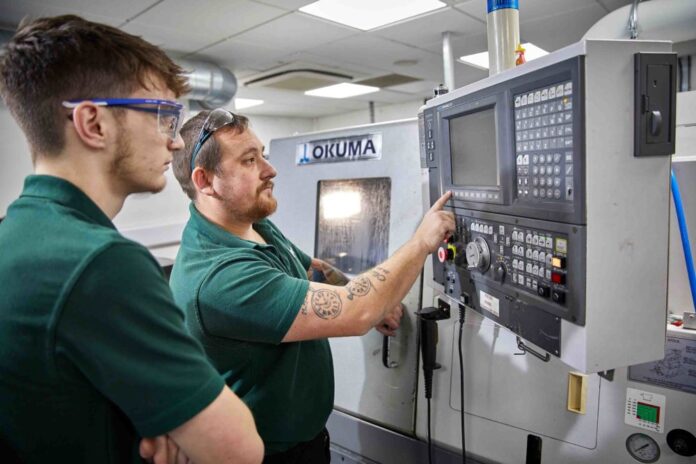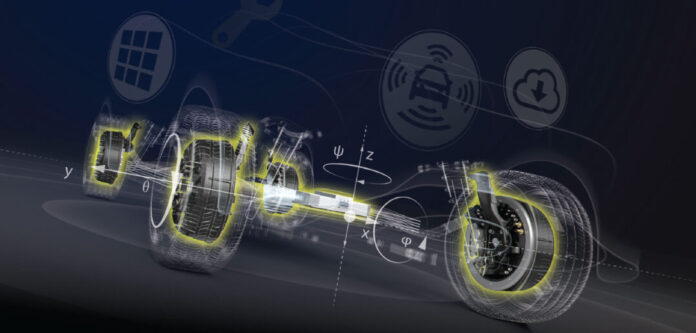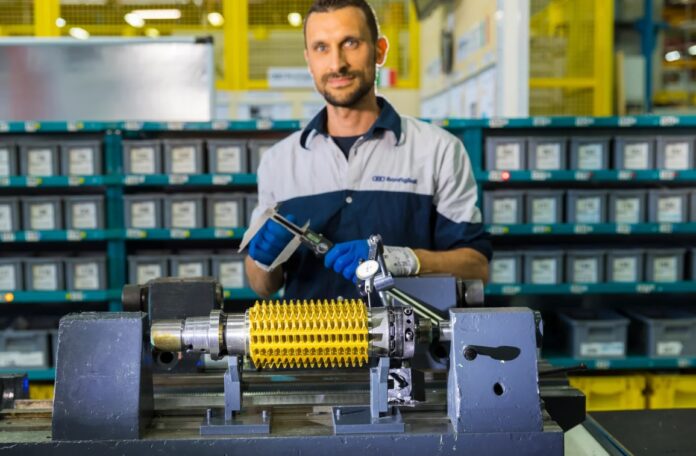Tesla Gigafactory in Nevada, where Semi electric truck and 4680 cells are produced, is further enlarged to meet the growing demand for electric vehicles and batteries. The plan provides for an investment worth 3.6 billion dollars and 3,000 employments, and for the creation of two new factories. One will work at the production of 100 GWh of 4680 cells, whereas the second will be dedicated to cars’ assembling.
It is one of the largest plants for Tesla and the batteries produced will be sufficient for 1.5 million electric cars yearly and will lead to the engagement of other 3,000 workers.
In the release that explains the expansion operation, Tesla declared they have invested 6.2 billion dollars in Nevada and they have recruited over 11,000 people.
Tesla, expansion in Nevada for its gigafactory
Xtrac achieves various ESG accreditations
A company that intends to make the difference and to innovate should grant the sustainability on more fronts, from the environmental one to that concerning the work environment. As well known by Xtrac, UK’s award-winning high-performance automotive and motorsport transmission technology specialist, which in the last year has achieved three more important accreditations over the past 12 months. They include attaining the Environment, Social and Governance ESGMark, setting emissions reduction goals through the Science Based Targets initiative (SBTi), and recognition as a Real Living Wage Employer.
Adrian Moore, company’s chief executive explained: «Xtrac has a longstanding commitment to ESG matters with employee wellness at the heart of its operations, as measured by our high levels of staff retention. Looking after our employees helps us look after our worldwide customers and other stakeholders, ensuring that we remain at the pinnacle of our industry as it transitions from internal combustion engines to hybrid and electric vehicles. It also ensures that we maintain our exports of around 70 per cent annually to Australia, Asia, Europe, and the Americas».
The accreditation by SBTi explains the commitment to reducing greenhouse gas emissions by 42% within 2030, in compliance with the targets of the Agreement of Paris to maintain the global warming under 1.5°C. On the other hand, in the training ambit, Xtrac Academy is the feather in the cap of the company, which can rely on highly skilled technicians and professional engineers.
In the picture Freddie King (left), a first-year apprentice engineer, receives instruction on Okuma Space Turn LB300 CNC lathe from James O’Hagan, trainer and mentor.
The use of steel restarts. What role does the component chain play?
A recent event by siderweb has revealed that steel faces a first 2023-semester of slowdown versus 2022, whereas the second part of the year is expected to end with a positive sign. On the whole, user sectors’ activity is expected to rise by 1% in the current year. More in detail, a slight recession is expected for mechanical machines and tools (-0.4%) and metal products (-0.2%), whereas constructions will increase by 2.5%.
Among the various segments concerned, automotive has been more affected by crisis bites. «In the electrification process of the mean fleet, Italy lacks a suitable offer in the field of flat steel products», declared Gianfranco Tosini from siderweb.
The general director of Anfia, Gianmarco Giorda, instead stated: «A part of new components are increasingly in-house manufactured by producers. Big OEM are for instance producing electric motors, because they deal with the problem of how managing the manpower in excess. That is a further limitation to the activity diversification by companies that today manufacture for instance tanks and exhaust systems that will be no longer produced in the European Union, or at least it will be possible to make them just for export. We are certainly perceiving a lot of proactivity in the components’ chain in looking at other technologies connected with the electric car. In Italy, there are 2,200 automotive component enterprises; 4-500 are involved in the transition to electric. A vast part is looking at other solutions or at other sectors, such as aeronautics and railway».
Important step for the fast charge in Italy
Atlante, the company of Nhoa Group dedicated to the infrastructure of fast and ultra-fast charge for electric vehicles, stemmed from the collaboration among Stellantis, Nhoa and Free2move eSolutions, has today inaugurated in Magenta, in Milan province, its first Italian fast charge station in the Automagenta dealership of Stellantis network.
In collaboration with Stellantis, Atlante is proactively working with a large number of dealers in all Italy, to implement in their headquarters many other fast charge stations, all powered by green renewable energy. These stations will allow electric vehicle owners to experiment the fast charge comfort.
Atlante is continuing its course towards the development of the biggest fast and ultra-fast recharge network in South Europe, as privileged Stellantis fast charge network.
“Today we see the concrete result of the partnership with a prestigious player, Atlante, which aims at making available for all citizens fast and ultra-fast charge points in spaces located inside the network of Stellantis dealerships. In this case, the implementation was enabled by the collaboration with an important entrepreneurial reality on the territory, Automagenta dealership, which has understood and perfectly matched Stellantis mission. The energy transition cannot be performed in one day, it is a process that will take certain times, but initiatives of this kind give an important cutting edge to those undertaking them, versus the future scenario that will take place,” declared Ciro Papa, Manager of the e-Mobility Business Unit of Stellantis Italia.
In France as well, Atlante and Stellantis are working in the same direction and the first fast and ultra-fast charge points will be soon online by some selected dealerships that sell Stellantis vehicles.
Elaphe and McLaren, together to develop a new electric motor
The Slovenian manufacturer of electric motors Elaphe and McLaren Applied have established a strategic partnership. The target is developing a propulsion group that combines the motors in Elaphe wheels and the vehicle control with inverter technology by McLaren Applied. Actually, Elaphe will use the 800-V silicon carbide IPG5 inverter by McLaren. Actually, Elaphe will use the IPG5 800-V inverter made of silicon carbide by McLaren. Partners affirm that their combined electric traction would offer notable space and weight saving to automotive companies, with vehicle’s low energy consumption and five-time faster torque response than existing systems, to be ascribed to the minor installation space of the transmission.
Current Elaphe motors in wheels show torque density up to 460 Nm/litre and 100 Nm/kg. At the same time, the company affirms that their motors will offer high control bandwidth of each wheel, allowing customers to define and to modify the drive character of their electric car through the software development.
H3X, new investments for the sustainable aviation
H3X has obtained an investment from Lockheed Martin Ventures, the venture arm of Lockheed Martin Corporation, to speed up the technological development and the marketing of revolutionary electric motors.
This latest funding brings the total raised by H3X to $9M, an investment that will be used to accelerate technology development and commercialization of H3X’s HPDM family of integrated motor drives and the scale-up of their new headquarters facility in Louisville, Colorado for production.
«At H3X, we are building integrated motor drives from 30kW to 3MW that are unparalleled in performance in terms of specific power (kW/kg) and efficiency. We are thrilled to have support from Lockheed Martin and are excited for the opportunity to work together and collaborate on next-generation defence technology using our motors», the witness by Jason Sylvestre, Co-Founder and CEO of H3X.
The investor has no doubts about his investment. «H3X is working on scaling transformative technologies that we believe have the potential to provide our customer with viable options for electrifying legacy, all-domain systems and components» is in fact what has affirmed Chris Moran, vice president and general manager of Lockheed Martin Ventures.
H3X has made advancements in several different areas that enable them to reach continuous specific powers of >10kW/kg and best-in-class efficiency. These areas include electromagnetics, material science, power electronics, additive manufacturing, motor control, and thermals. H3X has invested heavily in vertical integration and does design, manufacturing, and testing in-house at their headquarters in Louisville, Colorado.
H3X originally developed this technology to enable compelling fully-electric and hybrid-electric aircraft with excellent range and payload capacity while also significantly reducing noise and operational costs. “When you look at the power density and efficiency requirements that are needed for electrifying narrow-body jets, there really isn’t anything out there that is sufficient,” said Jason Sylvestre. “The Megawatt-class systems that you can buy today still use technology from the last century and are far too large, heavy, and inefficient to meet the demanding requirements of electric aviation.” Additionally, H3X has found that there are a number of other markets that can also benefit from their technology including defence, marine, specialized ground vehicles, and power generation.
Stellantis towards electric, investments in USA worth 155 million dollars
Stellantis has recently announced they will invest 155 million dollars overall in three factories at Kokomo, in Indiana, for the manufacturing of new electric drive modules (EDM) that will allow powering the electric vehicles that will be assembled in North America. The aim is hitting the target of satisfying 50% of sales in the United States with battery electric vehicles by 2030.
With over 25 releases of battery electric vehicles (BEV) planned in the United States from now until 2030, the EDM produced at Kokomo will be integrated into the vehicles based on STLA Large and STLA Frame platforms. EDM represents a complete solution for electric powertrains and is constituted by three main components – electric motor, power and transmission electronics – enclosed in a single module to offer better performances and autonomy at competitive costs. The new optimized EDM will allow each platform to reach up to 500 miles (800 kilometres) of autonomy.
Carlos Tavares, CEO of Stellantis, stated: «While we are successfully continuing our transition towards a decarbonized future in our activities in Europe, we are now setting up these same base elements for the North American market. Joining the advantages of EDM with the new BEV platforms and innovative batteries, we will be able to offer a variety of electric vehicles with unequalled performances and autonomy, at cheaper prices, to our customers. Besides, due to our in-house manufacturing skills and to our competence, we will succeed in doing that in extremely flexible and efficient manner».
Investments will concern Indiana Transmission, Kokomo Transmission and Kokomo Casting plants. The gearbox cover will be moulded at Kokomo Casting factory and machined by Kokomo Transmission plant. The gear machining and the final assembly will take place at Indiana Transmission Plant. The production start is scheduled in the third quarter of 2024, after the reconversion of plants.
Since 2020, Stellantis has invested almost 3.3 billion dollars in Indiana to promote the transition towards the electrification. This also includes an investment worth 643 million dollars, recently announced, for the production of a new motor for traditional and PHEV applications, a state-of-the-art eight-speed transmission and a gigafactory in joint venture with Samsung SDI.
Bonfiglioli grows and takes over Selcom Group
Ferment in the world of drives: Bonfiglioli has acquired 100% of the social capital of Selcom Group spa, company specialized in the design, production and sale of electronic boards, electronic products, software and solutions for customers in the industrial, biomedical, automotive, intralogistics and home-appliance sectors. “We are happy we can actually rely on the presence of Selcom inside our Group. On the other hand, it will be a marvellous challenging course together and, thanks to the competences, the determination and the commitment of all, it will lead us to more and more competitive value proposals” stated Sonia Bonfiglioli, President of Bonfiglioli Spa.
One of the largest high-speed charging networks in Europe is incoming
Be Charge, company fully controlled by Plenitude, which is in its turn a branch of Eni Group, will receive from the European Commission and the Italian Cassa Depositi e Prestiti (CDP) over 100 million Euros for the implementation by 2025 of one of the largest high-speed charging networks in Europe. In the specific case, CDP, as national promotion institute, has granted a funding worth 50 millions, with the addition of other 50.4 millions as non-refundable grant awarded by the European Commission.
The goal of this operation is favouring the development of the infrastructures dedicated to the electric mobility and speeding up the energy transition towards the implementation of a network with over 2,000 “ultra-fast” charge points, with a minimum power of 150 kW, along the main European transport corridors of eight Countries: Italy, Spain, France, Austria, Germany, Portugal, Slovenia and Greece.
“This operation is framed in the programme of the company, which today counts more than 15,000 charging points, and has the goal of developing a high-power European infrastructure for electric vehicles and of doubling its network by 2026, reaching 30,000 points”, stated Stefano Goberti, Managing Director of Plenitude.
Adina Vălean, European Commissioner for Transport, declared: “With the Alternative Fuels Infrastructure Facility, we are going to support the fast introduction of recharge infrastructures. In this way, we will permit the diffusion on the market of zero- and low-emission vehicles and, finally, to transform our climatic goals into reality”.
Rare earths, crackdown on exports from China?
The latest rumours from the market suggest that China is considering – to safeguard the “national safety” – to forbid the export of the rare earths used to manufacture high-performance magnets used for the production of electric motors and wind-turbine motors.
The Serbian expert Goran Janjic, Sustainability and Business Strategist explained: “With the global trend toward decarbonization driving a shift toward the use of electric motors, China is believed to be seeking to seize control of the magnet supply chain and establish dominance in the burgeoning environment sector”.
Beijing is currently in the process of revising its Catalogue of Technologies Prohibited and Restricted from Export, a list of manufacturing and other industrial technologies subjected to export controls, and released a draft of the revised catalogue for public comment in December.
“China is estimated to hold an about 84% share of the global market in neodymium magnets and an over 90% interest in samarium cobalt magnets. Japan, meanwhile, has about 15% of the neodymium magnet market and a less-than-10% share of that for samarium cobalt. If China bans the export of such technologies, it would be difficult for the United States and Europe, which do not traditionally manufacture rare earth magnets, to newly enter the market, thus making those countries totally dependent on China, according to a European source”.










